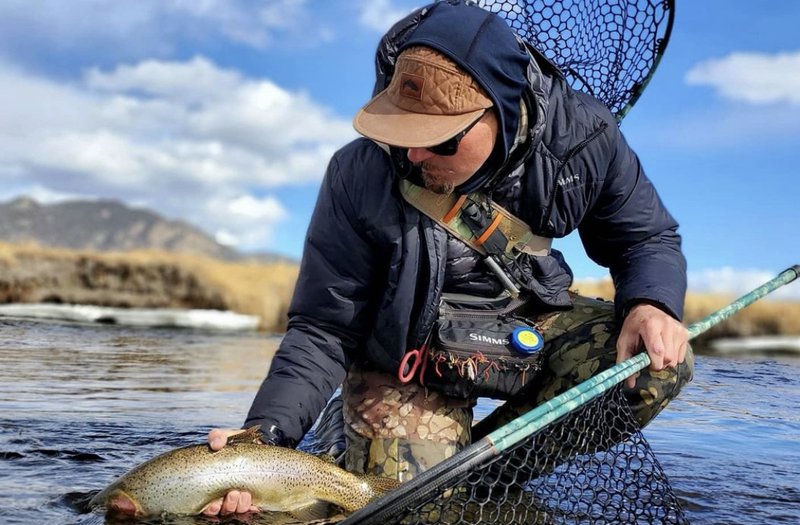If you were to ask 100 anglers which weather condition they dread the most, odds are the majority will say “W”. They dislike it so much they won’t even say the full word in fear that saying the word “wind” will conjure 20 mph gusts. So, why do anglers dislike wind so much? Well, it makes it hard to cast, get a clean drift, it kills most bug activity, it’s hard to row in, it eliminates your ability to sight fish, it can be cold, annoying and the list goes on and on. Regardless of where you are in the country, odds are you’ll encounter wind throughout the year. While it’s nothing like what our friends in Wyoming experience, wind in Colorado is a frequent obstacle and like everything else, it’s something that we can either adapt to or avoid all together.
Like most anglers, we prefer to not fish in high winds but it’s never something that will keep us off the river. If you are willing to adapt and make adjustments, chances are you’ll have the river to yourself and actually have a fun and productive day. To help you adapt and overcome the struggles that wind provides, we partnered with our friend and guide, Jonathan Messinger (@flymessinger), to provide you with a few tips and tactics.

Make short drifts with a heavy nymph rig: When it’s windy, the wind moves your line in the water. When your line moves, it creates drag, decreasing your ability to execute a natural drift. To avoid this, decrease the amount of line you have on the water and focus on shorter drifts. Adding additional weight to your line will also decrease the wind’s ability to move your line and flies.
Lay big mends early in your drift: Just like when you’re fishing across multiple currents, you need to mend your line according to the direction of the wind to achieve a clean drift. If wind is blowing upstream, lay a big downstream mend early in your drift. If wind is blowing downstream, lay a big upstream mend. Proactively mending will give your flies enough time to naturally drift through the strike zone before the wind has a chance to move and drag your line.
Fish with your back to the wind: We realize that this isn’t always possible, but if it is, putting your back to the wind will make casting a bit easier. We’ve all tried casting into the wind and either your cast comes up short of the target, you miss all together or you effectively punch through the wind and cannonball your flies into the water. None of those outcomes are ideal. If you have the wind at your back, you’re able to avoid most of those outcomes. If you find that the wind impacts your back cast, try roll casting.
Fish patterns that swim and/or pupate: As we mentioned previously, the wind does a great job of moving your flies and line. Instead of fighting that, lean into it and fish patterns that are intended to move in the water. Patterns such as soft hackles, leeches and streamers are great examples. These patterns all imitate bugs or fish that naturally move in the water, so having a little movement is actually a good thing.
Extend your leader: Extending your leader by a few feet will create more distance between your line and tippet. Doing this will keep your line further away from the fish’s line of sight while desperately mending through the wind. The less surface disturbance you create near the feeding fish, the better.
Double Haul: If you find yourself in a position where you need to make a longer cast, the double haul is one of the more effective casting techniques to do so. The double haul has been used for years by saltwater junkies who rarely get a break from the wind, but the same tactics and technique can be applied to freshwater. It takes time to hone it in and patience on the water, as it’s all about timing. However, if you have this casting technique in your book of tricks or are willing to learn it, you’ll find it much easier to cast into the wind.
